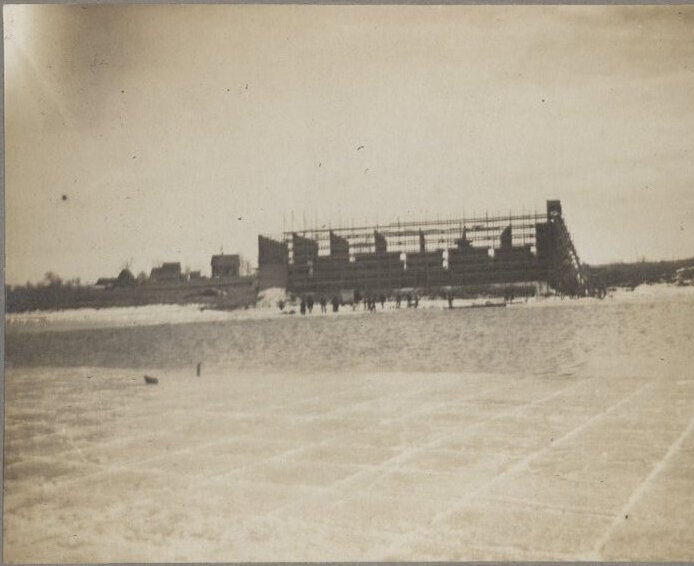Back in the days before refrigerators and freezers, harvesting ice was a major wintertime business in Scott County. In the month of January when the ice was “ripe,” men would go to work cutting blocks of it out of local lakes and the Minnesota River.
In the book As I Remember Scott County, Frances Brandl of Belle Plaine, whose brothers ran an ice harvesting business, details this process:
Cutting ice was a very hard, heavy job. First of all it was cold, very cold, during the month of January. At times it was also wet, should one slip and fall into the lake, which happened.
The ice was sawed with a long heavy saw with a wooden handle on one end. The ice blocks were sawed 18×36 inches. The depth varied with the winter. Blocks had to be sawed very straight on all sides or they would not pack tight in the ice houses. The ice was covered and packed tight with saw dust.
Farmers loaded ice onto horse-drawn sleds and hauled it back to their farms, while icemen went door-to-door in town selling blocks to families for their iceboxes. Harvested ice was also used by grocery stores, saloons, creameries, meat packers, and breweries. In fact, all of the breweries that existed in Scott County prior to Prohibition were located along the Minnesota River or another stream or creek to allow for easy access to ice, and the breweries all had ice storage facilities as well.
Ice harvested in the winter months was used throughout the spring and summer – the sawdust or straw it was packed in kept it from melting. In addition to preserving food, this ice made possible a favorite summertime treat: ice cream.
Below are photos from the SCHS’s collection of a 1905 ice harvest on the Minnesota River. These photos depict a complex operation that involved cutting blocks of ice by hand and then using a wooden pulley system and conveyor belt to move the ice.
Ice harvesting on the Minnesota River at Shakopee. In the background you can see a wooden pulley system and conveyor belt used for moving blocks of ice. 1905. From the SCHS Collections
Workmen cutting ice on the Minnesota River at Shakopee. They are standing on a wooden boardwalk placed over the frozen river. 1905. From the SCHS Collections.
Close-up of the wooden pulley system and conveyor belt used to move blocks of ice. 1905. From the SCHS Collections
Another view of the pulley system and conveyor belt. The ice visible in the foreground of the photo appears to have been scored. 1905. From the SCHS Collections
The front side of the wooden pulley system and conveyor belt. The wooden pulley system is constructed along the shore of the river. The front side shows areas divided by vertically placed pieces of wood. Blocks of ice available for purchase are stacked within each stall. The image is looking down into one stall, which contains blocks of ice, five workers and a wooden conveyor belt. 1905. From the SCHS Collections
Men standing on the narrow wooden boardwalk cutting blocks of ice by hand. 1905. From the SCHS Collections.






